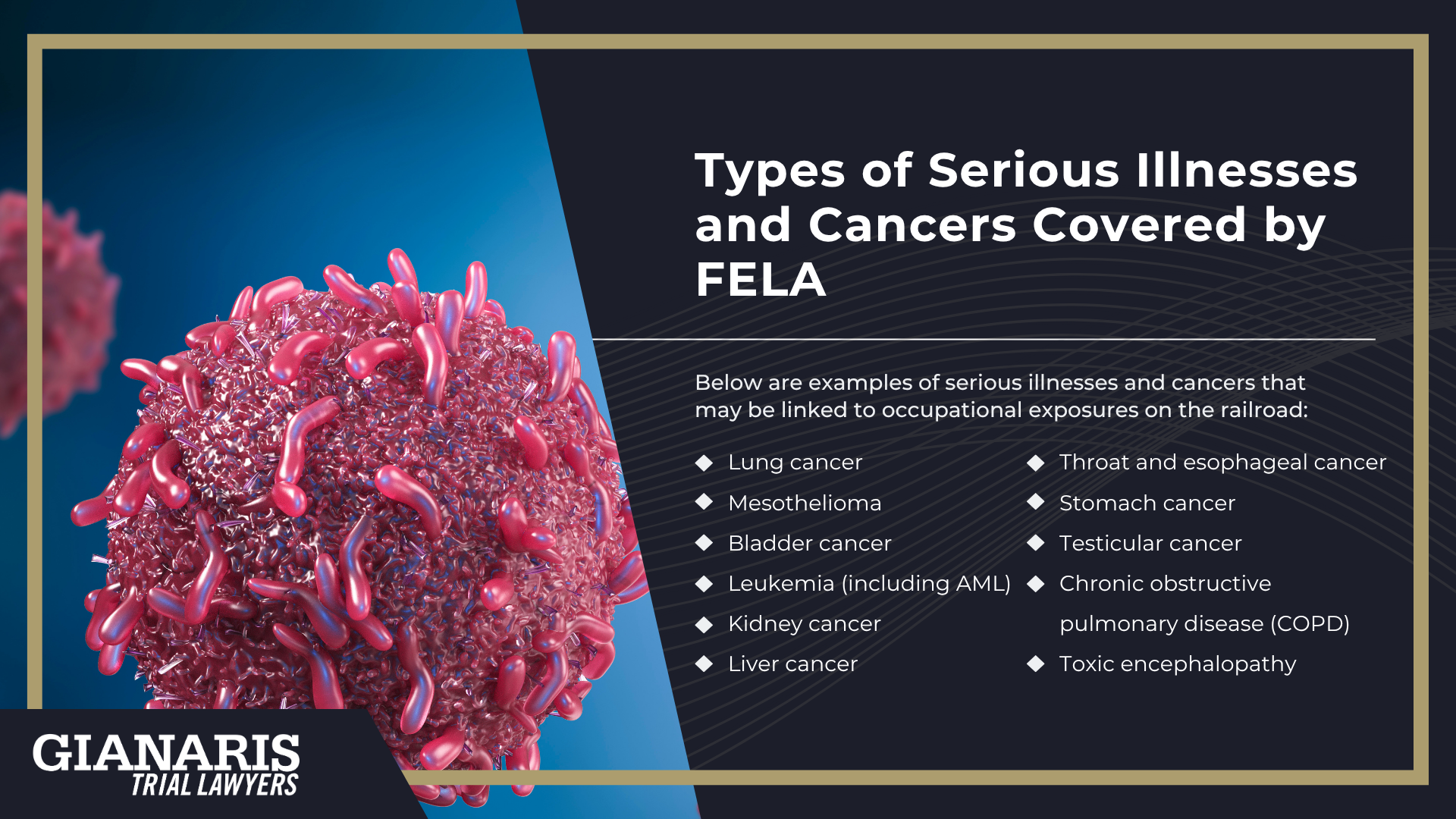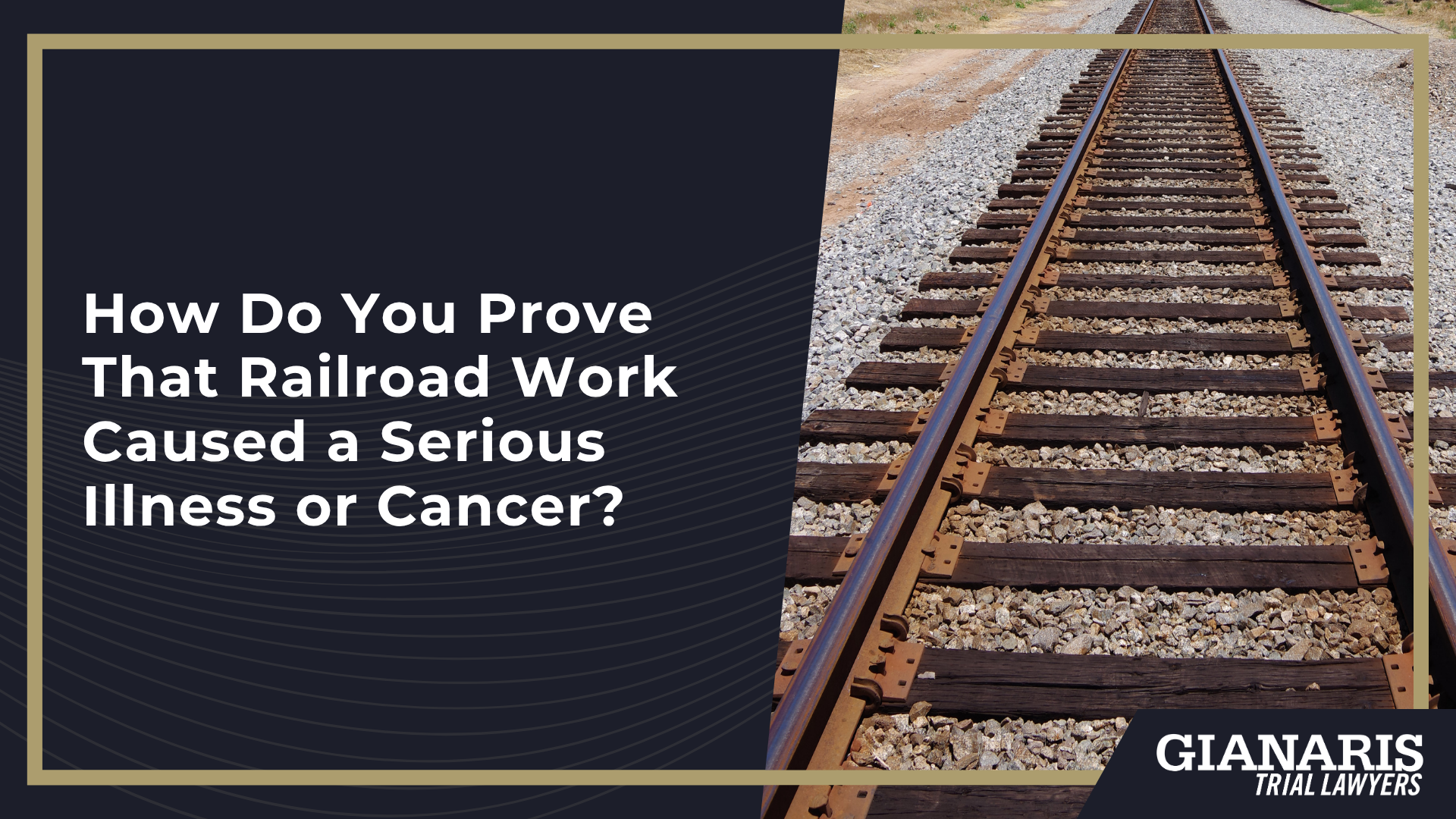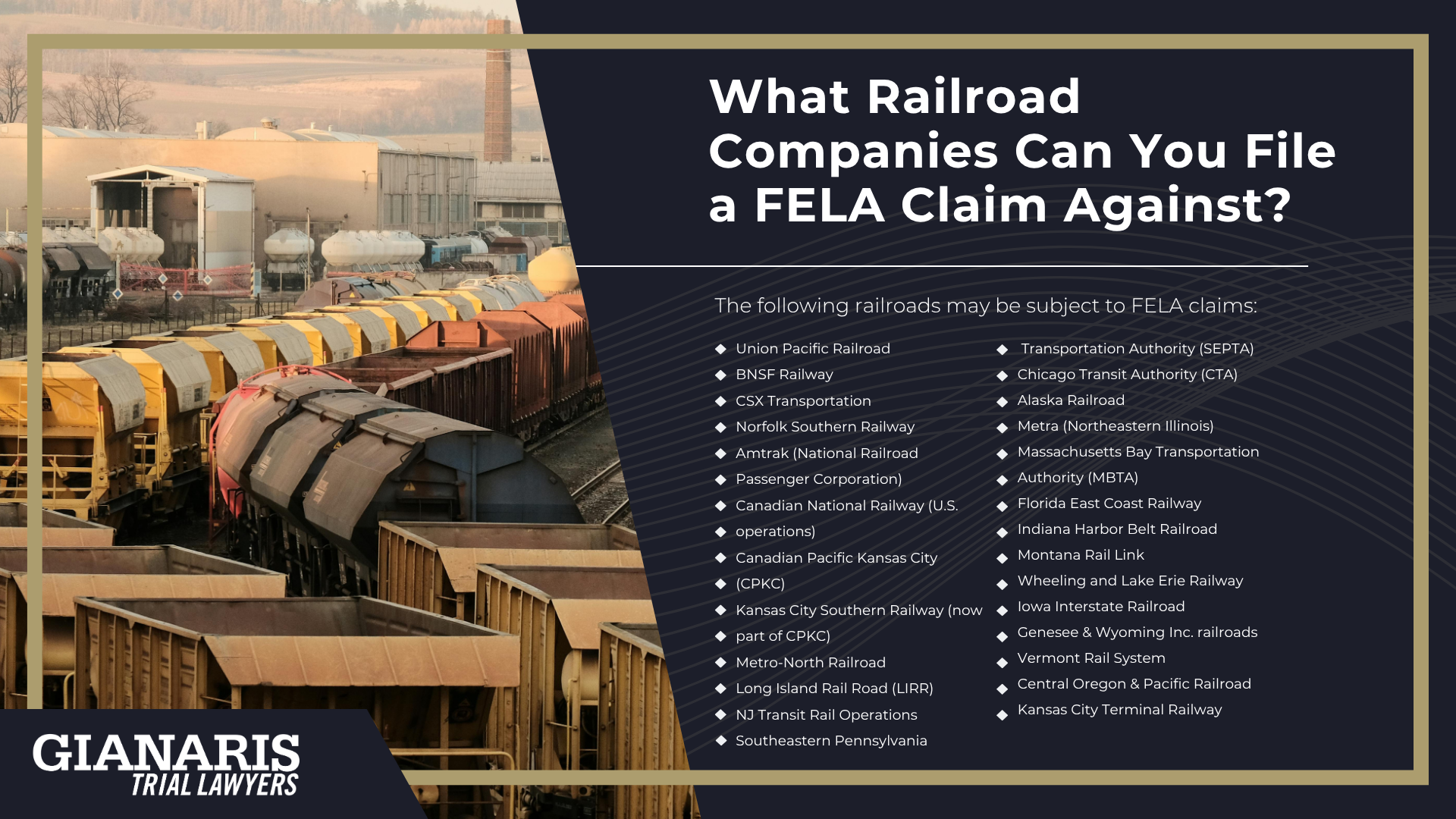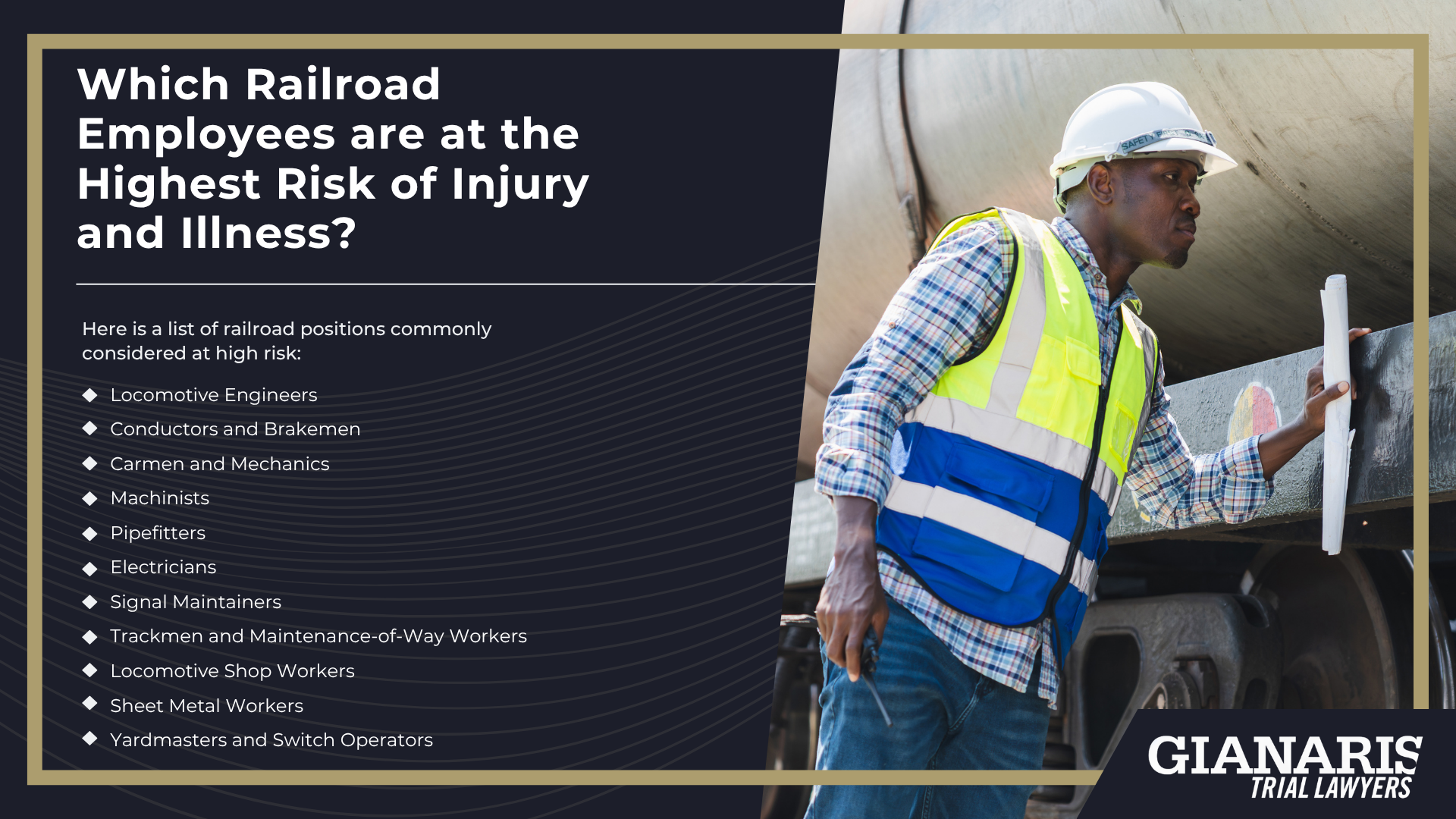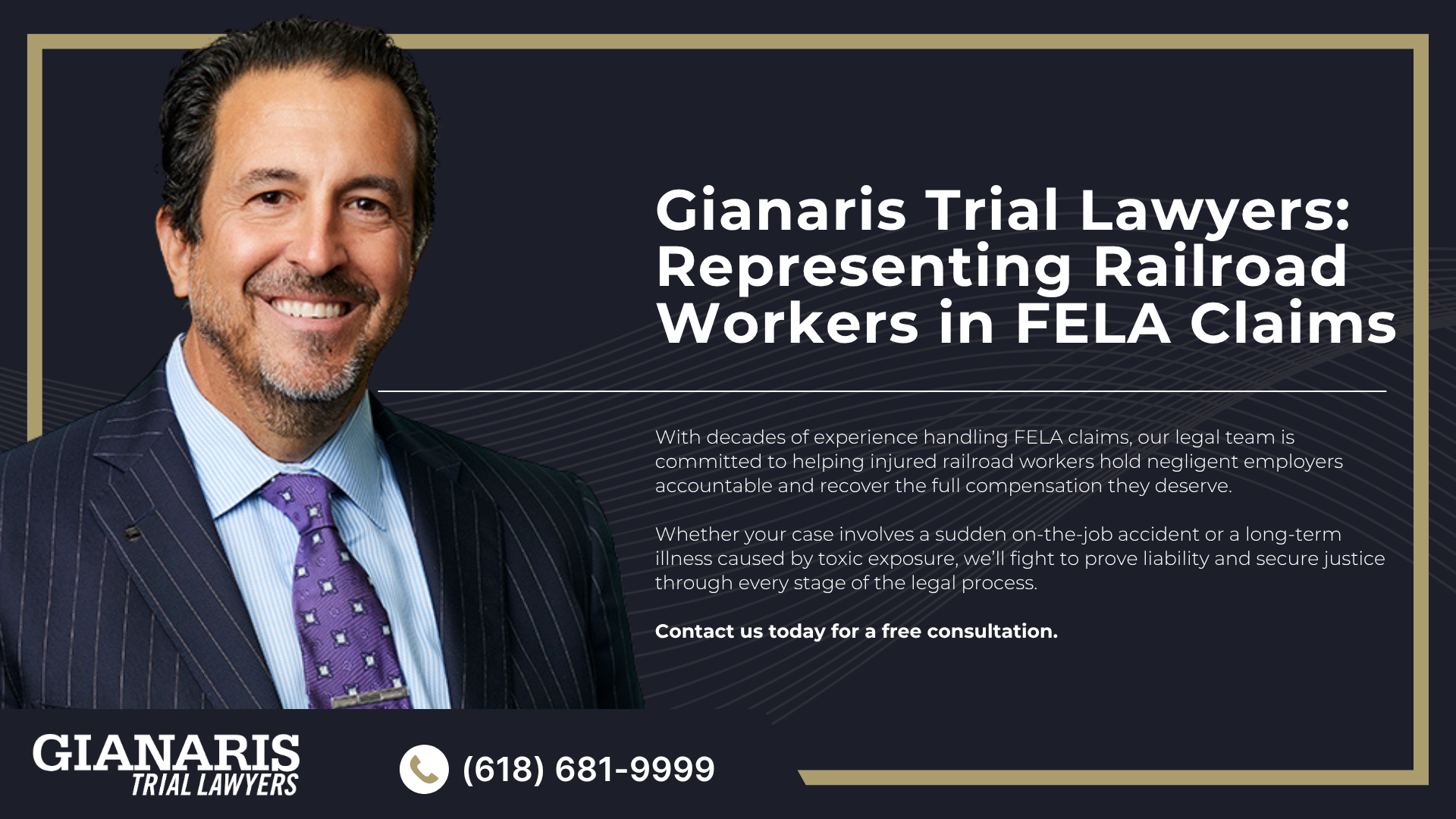FELA was specifically designed to compensate injured railroad employees for harm caused by the negligence of a common carrier operating in interstate commerce.
Given the inherent dangers of rail work, physical injuries are not uncommon and can range from minor to catastrophic.
Unlike standard workers’ compensation systems, FELA cases require proof that the employer’s negligence played a role—however small—in causing the injury.
This burden of proof highlights the importance of documenting and classifying the types of railroad worker injuries that may be eligible for compensation.
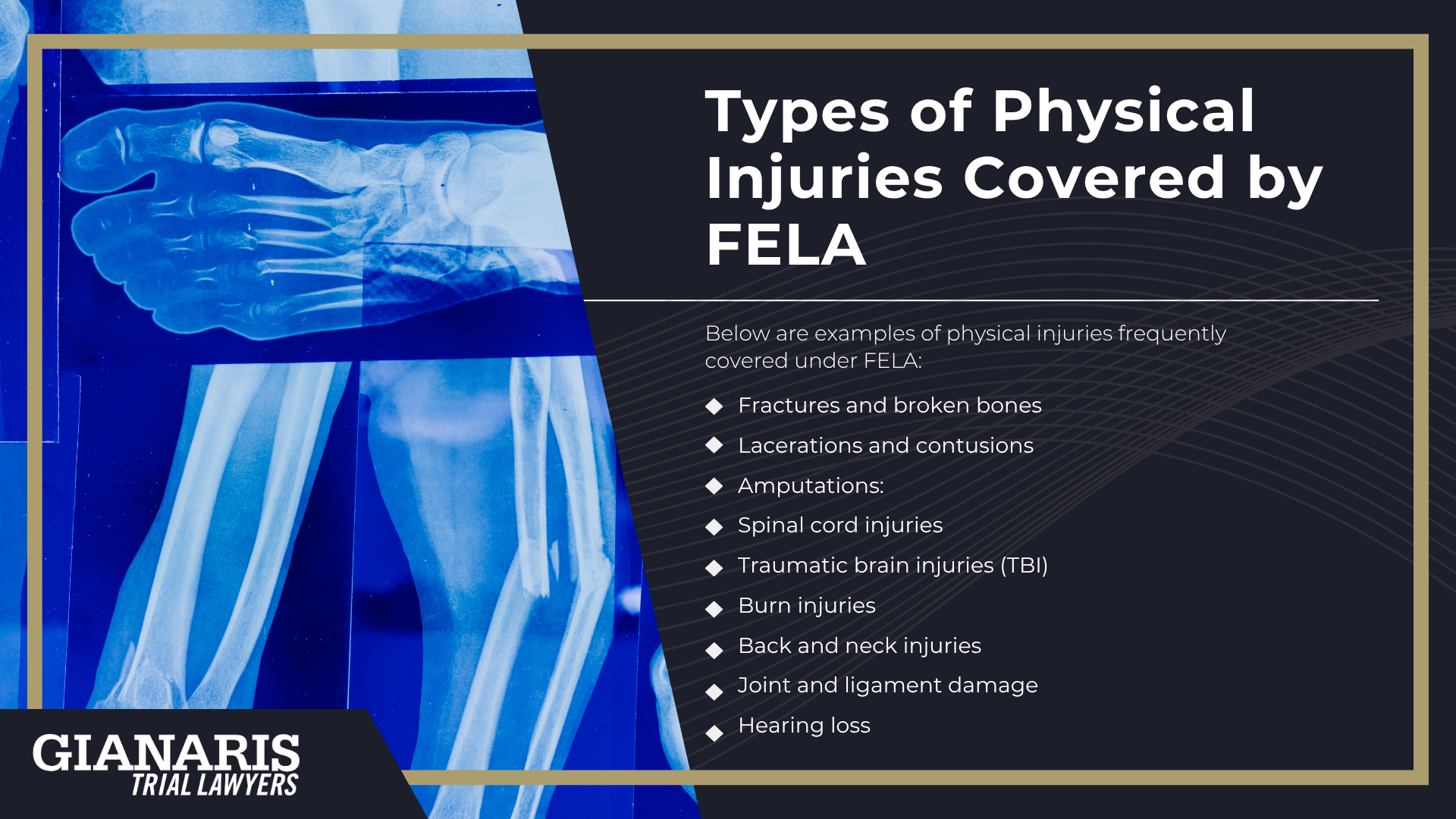
Below are examples of physical injuries frequently covered under FELA:
- Fractures and broken bones: Often caused by falls, collisions, or being struck by heavy tools or equipment
- Lacerations and contusions: Resulting from sharp surfaces, metal edges, or workplace accidents
- Amputations: From entanglement in moving equipment or coupling systems
- Spinal cord injuries: Caused by falls, crashes, or heavy lifting accidents
- Traumatic brain injuries (TBI): Due to falling objects, head impacts, or equipment failures
- Burn injuries: From electrical malfunctions, fuel, or overheated machinery
- Back and neck injuries: Often from repetitive strain, poor ergonomics, or sudden trauma
- Joint and ligament damage: From improper lifting techniques or repetitive motion
- Crush injuries: Frequently caused by being caught between railcars or during switching operations
- Hearing loss: Resulting from prolonged exposure to loud machinery and engines without protection
These injuries can be devastating and often require extensive medical care, rehabilitation, or permanent job modification.
Injured railroad employees facing these challenges should consult an experienced FELA attorney to determine their eligibility for compensation and to begin building a claim based on the unique risks of their work environment.
What To Do After an On-The-Job Injury as a Railroad Worker
If you’ve been injured on the job while working for a railroad, taking the right steps immediately can significantly affect the outcome of your FELA claim.
A FELA claimant must focus on proving negligence to receive compensation.
It’s important to avoid mistakes, especially when dealing with a railroad claim agent, who does not represent your interests.
Since FELA is the exclusive remedy for injured workers, you have the right to seek full compensation through legal action.
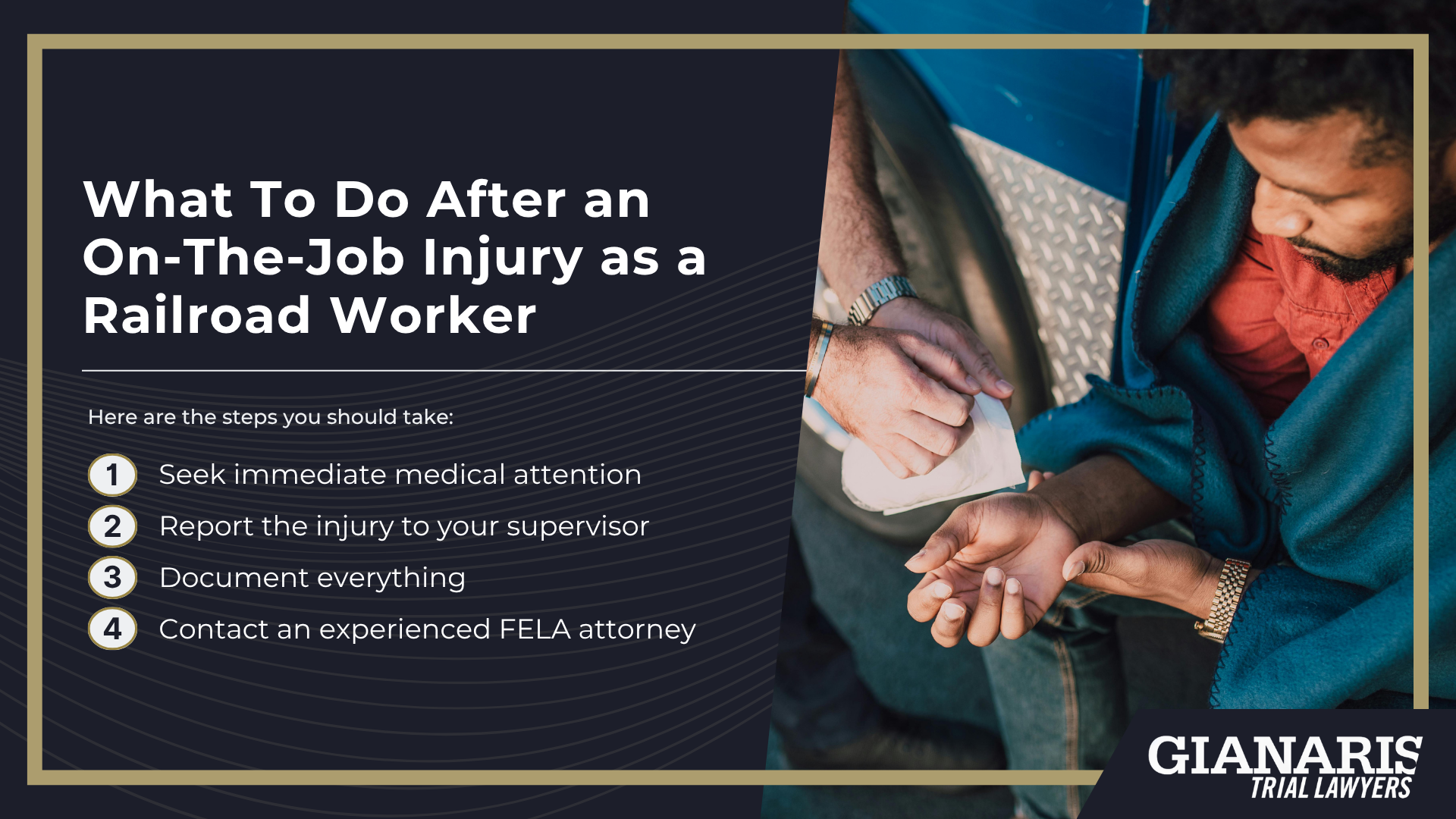
Here are the steps you should take:
- Seek immediate medical attention to protect your health and establish documentation.
- Report the injury to your supervisor, but avoid giving recorded or signed statements to a railroad claim agent.
- Document everything, including names of witnesses, the equipment involved, and conditions at the time of the accident.
- Contact an experienced FELA attorney before proceeding with any official claims process or settlement discussions.


